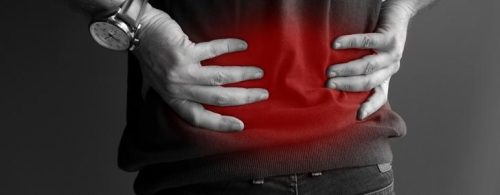Article reviewed and approved by Dr. Ilan Darmon, radiation oncologist at Hartmann Oncology and Radiotherapy Center (Hartmann Oncology & Radiotherapy Group).
Back pain is distressing and rarely goes away without proper care. These pains in some cases could be linked to cancer, which requires rapid treatment. We are going to review the types of tumors that can cause back pain and how to relieve them with physical therapy.
Back pain – Their origins and organs involved
Lower back pain is defined by several factors.
The dorsal region in which they are located
The spine is divided into three parts:
- The upper back containing the cervical, that is to say the neck, prone to neck pain;
- The middle of the back for which we speak of back pain;
- The lower back where the lumbar muscles are located, the pain of which is called low back pain.
The bodies involved
The organs causing the pain are:
- The muscles that form contractures;
- The joints that can lock;
- Intervertebral discs which cause herniations and discopathy when they deteriorate;
- Nerve roots or the spinal cord whose dysfunctions appear more rarely.
The origin of pain
The origin of back pain may be related to your behavior: you adopt bad posture in front of a computer or when you carry heavy objects, you do not move enough, your bedding is faulty, etc. It is also closely linked to your state of mind if you are stressed. In this case, it is mechanical pain. They are treated by sessions with the physiotherapist. For the treatment to be effective, it is essential that you correct the causes: flexibility exercises, correction of your postures, etc.
Inflammatory pain is linked to various pathologies, among them cancer.
What are the signs suggesting cancer?
Cancer cells reproduce haphazardly and form a mass of tissue called a tumour. They can affect any of our organs. The danger of these so-called malignant tumors is their spread to adjacent organs, we speak of metastases. Only rapid treatment can circumscribe the cancer, stop its progression, with a view to eradicating it.
The symptoms of cancer are sometimes invisible and are only detected by screenings recommended from a certain age: breast, prostate, colorectal cancer, etc. However, certain signs should alert you and encourage you to consult a doctor (or a radiation oncologist):
- General tiredness;
- Weightloss ;
- Appearance of a lump;
- Bleeding in urine, stools, cough, vagina, etc. ;
- Digestive or urinary disorders;
- Lasting fever;
- Night sweats.
Can back pain be linked to cancer?
The mass of tissue produced by cancer cells can generate pressure on the vertebrae, as well as on the spinal cord (this is called spinal cord compression) and can cause back pain.
On the other hand, when the cancer spreads, it forms metastases that can colonize the back. Statistically, two thirds of metastases appear in the middle of the back by developing at the level of the rib cage. Just under a third affects the lower back. The remaining 10% lodges in the cervical.
The cancer pain and its metastases in the dorsal area are sometimes lancinating. They are aggravated by certain movements that amplify the pressure on the spine. The horizontal position forcing the body to weigh on the back further exacerbates the pain, which explains tormented nights.
Finally, significant spinal cord compression has repercussions in the limbs, causing them to become numb, or in the organs, generating for example incontinence.
Cancers likely to cause back pain
There are multiple cancers most likely to cause back pain. They are considered osteophilic, that is to say likely to spread due to bone metastases, often located in the spinal column.
Osteophilic cancers affect the following organs:
- Breast ;
- Lung ;
- prostate;
- Kidney ;
- Thyroid;
- Skin (Melanoma)
- Upper aerodigestive tract
- pancreas;
- Liver ;
- Abdomen;
- Colon;
- Uterus ;
- Spinal cord (myelomas and leukaemias).
Solutions to relieve back pain
When cancer is detected, the top priority is of course to treat it. A team of doctors meets in a Multidisciplinary Consultation Meeting (RCP) to define the most effective strategy and collectively validate the necessary treatments according to the patient's case. Additional pain, including back pain, is treated in parallel.
The drug protocol
In addition to the drugs that may be prescribed to treat the tumor or to reduce the side effects of chemotherapy or radiotherapy treatment, the doctor can offer his patient a treatment based on analgesics, or even anti-inflammatories, to relieve back pain.
You must inform your referring doctor of any side effects that may appear following the treatments. Your body is already weakened by the tumor, its reactions can be diverse.
Physiotherapy
The sessions provided by the physiotherapist effectively relieve back pain. The manipulations carried out by the practitioner can relieve tension and soften certain parts of the body.
The physiotherapist works on cancer-related pain, but also more generally on the tension caused by the stress of the disease, which is likely to increase the patient's pain.
Resources
My name is Anas Boukas and I am a physiotherapist. My mission ? Helping people who are suffering before their pain worsens and becomes chronic. I am also of the opinion that an educated patient greatly increases their chances of recovery. This is why I created Healthforall Group, a network of medical sites, in association with several health professionals.
My journey:
Bachelor's and Master's degrees at the University of Montreal , Physiotherapist for CBI Health,
Physiotherapist for The International Physiotherapy Center




